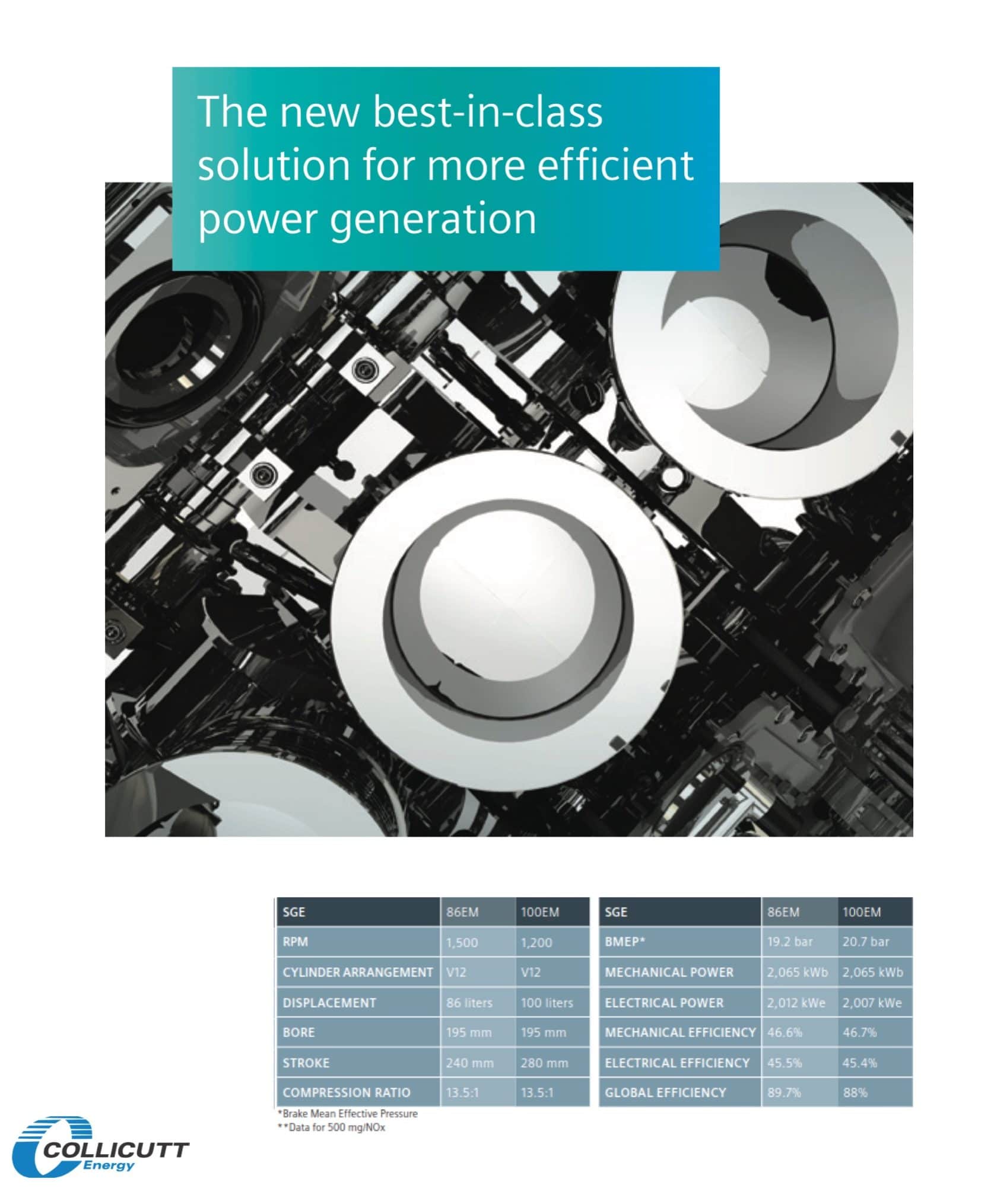
“The best-in-class solution with the best-in-class cycle time”
- Robust, compact design provides more relief for long-lasting performance
- Spark-ignited lean-burn unit ensures low emissions
- Innovative pre-combustion chambers provide efficient and stable combustion
- 12 unique high-volume cylinders deliver highest displacement
- Less maintenance compared to 16-cylinder engine options
- Fast cycle times and implementation
- Smallest footprint in the competitive set

“Highest electrical efficiency in the 2 MW-class”
Before the EM series, when it came to 2 MW-class engines, your options were limited. Now, there’s a powerful new choice available:
the new SGE-EM gas engines from Siemens
The result of years of development, testing, refinement, and innovative engineering, they deliver a number of benefits that make them a true competitive choice.
Uncompromising performance to meet ever-growing demands
Economic pressures. Customer demands. Reliability concerns. Regulatory standards. In the world of power generation, you face plenty of challenges. If you want to successfully overcome them, you need to have the best solution in place. The new SGE-EM gas engines are your best solution.

“Innovative engine design and combustion technology”
Siemens is known for innovation, and the new E-Series engines carry that torch of ingenuity with a unique cylinder design that produces the highest displacement in the 2 MW-class, innovative pre-combustion chambers, spark-ignited lean-burn control capabilities, and a robust overall design that ensures maximum flexibility in a wide variety of conditions.
- Natural gas–powered engines
- Efficient and stable Combustion
- Exceptional Displacemen
- Low maintenance
- Optimized materials
Maximum efficiencies in the smallest footprint.
The new E-Series engines are not only the new competitive choice in the 2 MW-class, they’re also the most compact. Their unique ability to deliver high power output with incredibly low emissions helps you create a smaller footprint—both physical and environmental.



